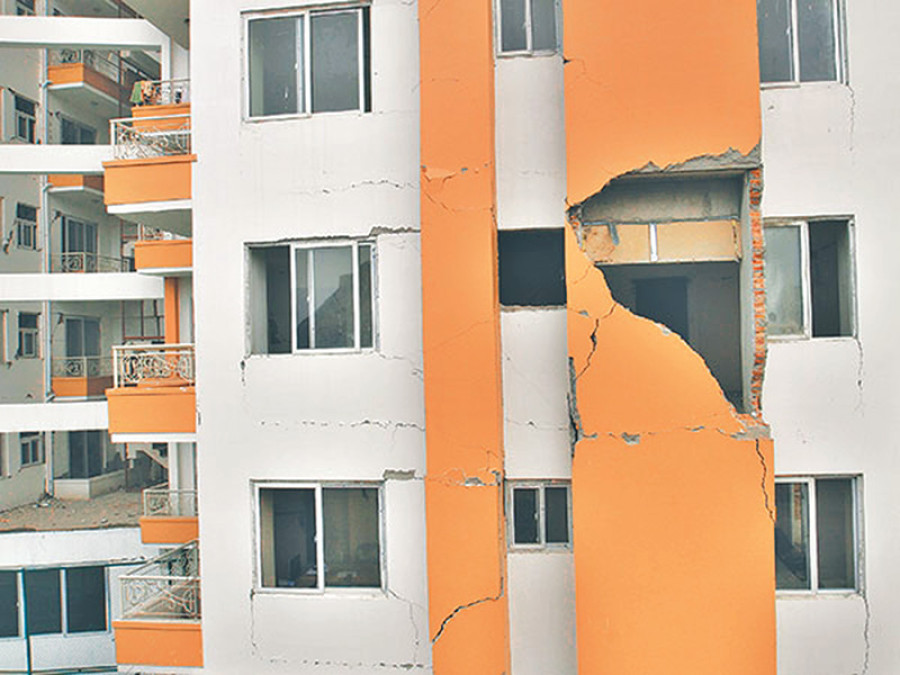Money
18 out of 51 apartment buildings declared ‘safe’
Eighteen out of 51 high-rise apartment buildings in the Kathmandu Valley that were damaged by the 7.8-magnitude earthquake of April 25, 2015 have been declared “safe” for residential purpose.
Sanjeev Giri
Eighteen out of 51 high-rise apartment buildings in the Kathmandu Valley that were damaged by the 7.8-magnitude earthquake of April 25, 2015 have been declared “safe” for residential purpose.
These “safe” apartment towers have been given “clearance certificates”, according to the Department of Urban Development and Building Construction (DUDBC) Division Office Kathmandu.
“The certificates were given after carrying out a number of tests,” Basanta Kumar Rai, chief of Kathmandu Division Office, said. “While some of the tests were conducted by our engineers, others were performed by property developers. We also cross verified the data and information before declaring the buildings safe.”
The office, however, did not say when the fate of the remaining 33 apartment towers will be determined.
The government had conducted rapid assessment of 51 apartment buildings after the earthquake struck the country. These buildings were categorised as red, yellow and green. Red refers to buildings unsafe for immediate use, while those marked yellow require repair before use, and buildings labelled green are safe for use.
Most of the 51 apartment towers that were examined by the government had sustained multiple cracks, while two—Park View Horizon in Basundhara and Oriental Apartment Phase II in Kuleshwor—had suffered heavy damages. These two apartment towers have been given red stickers and people are not allowed to reside in these buildings.
A big chunk of apartment towers that were assessed received yellow stickers. Residents of most of these buildings labelled ‘yellow’ have already moved into their apartments, although it is not clear if repair works have been done properly. To expedite the process of extending clearance certificates for the remaining 33 apartment buildings deemed “unsafe”, the office has already sought non-destructive test (NDT) report from 19 apartment buildings and detailed damage evaluation (DDE) report from five apartment towers. The office has also sought various reports from six apartment buildings, while three towers—Signature I, II located at Teku and Bagmati Apartment at Shankhamul-have not responded to the government’s call, which makes their status unclear.
Rai admitted that the process of assessing buildings has been moving ahead at a very slow pace due to lack of engineers in the Division Office Kathmandu. “There are only three to four engineers who are capable of assessing buildings. And we are supposed to assess not just high-rise buildings but others as well. This is why we have not been able to complete our work till date,” Rai told the Post.
Another reason for slow progress, according to Rai, is stringent provision for building assessment.
“Apartments accommodate hundreds of families. Hence, we need to be careful even about minor issues,” Rai said. According to the Nepal Land and Housing Developers’ Association, more than 5,000 families in the Valley live in apartments.




 13.12°C Kathmandu
13.12°C Kathmandu














%20(1).jpg&w=300&height=200)
